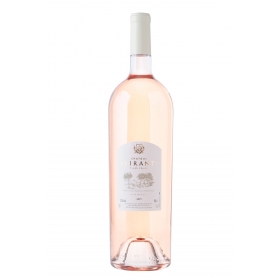Showing 1-6 of 6 item(s)
What format to choose for storage in the cellar ?
Initially, the cylindrical glass bottle was designed to simplify inventory in crowded cellars. While this is still true, the bottle shape is also a way that helps ensure the proper aging process. Indeed, the size of the bottle greatly influences aging. If you want to keep a vintage in the cellar, it is preferable to use the magnum or even the Methuselah container because larger volumes evolve more slowly as opposed to the standard bottle size which tends to expedite the process. Of course, the typicity of the wine also influences the shape of the bottle and the cork. If you compare a sparkling champagne with a wine from Provence or Bordeaux, you will recognize the striking differences in the shape of the bottles. These differences stem from different conservation needs. The selection of Château Virant magnums has been designed for storage as well as for immediate tasting. The size of the magnum allows the pleasure to last. Our red wines, whose fruity elegance could almost recall a pinot noir, thrive in larger bottles such as the magnum or the Balthazar. It is no coincidence that these formats are the preferred bottling sizes for champagne.
From magnum to the Methuselah, where do these names come from ?
Let's take a look at history to find out where the names of these differently sized wine bottles come from. These sizes, from the smallest to the largest, were above all designed to age wine effectively and to maintain its color. Have you ever wondered where the term magnum comes from? This one is the most obvious. "Magnum" means "large" in Latin, perfectly logical for a bottle with a volume twice as large as the standard sized bottle. Enjoy the magnums of Château Virant that you can keep for years or open and share with good company. The Nebuchadnezzar, which holds 15 liters of wine, has a more surprising history, one not linked to wine at all. This bottle takes its name from a King of Babylon who conquered much of the Middle East in the 6th century BC. Today the name survives thanks to these extra large bottles that can be found all over the world. If you invite a lot of friends to share an aperitif, you might be tempted to open a Jeroboam (3L) or even a Balthazar (12L). Tell your guests--each of these two names is intimately linked to Hebrew and Biblical history.
Different formats for different needs
Each bottle format offers a different tasting experience. The magnums offered by Château Virant guarantee you a long aging potential as well as the development of an interesting aromatic palette over the years.














